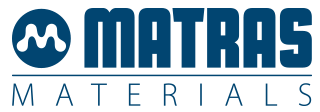Katarzyna Matras-Postołek, Ph.D. Eng.
chemist by education, graduate of Cracow University of Technology, the Faculty of Chemical Engineering and Technology, Plastic Technology specialisation. In 2004, she defended her master thesis Obtaining Hydrogels Based on . In that year she began International PhD Studies at Jerzy Haber Institute of Catalysis and Surface Chemistry of Polish Academy of Sciences and at the Faculty of Chemical Engineering and Technology, CUT. At the same time she conducted research on the synthesis of organic compounds in a microwave radiation field as a member of prof. Dariusz Bogdał’s team.
In the early 2006, Katarzyna Matras-Postołek went to Germany to Münster University of Applied Sciences and worked in the international team of prof. Michael Bredol. She opened a new chapter in her research interests, focusing on the topic lying on the border between polymer chemistry and inorganic nanocrystals which concerns polymer nanocomposites. In 2006-2012, she worked as a scientist and at the same time was a researcher at several research projects conducted with one of the largest German chemical companies, Evonik Industries AG. The result of the long term work was a Ph.D. dissertation Composites from Luminescent Nanosized ZnS:Mn and Optical Polymers – Preparation and Characterization, which was defended in 2010 at CUT. Another results were several articles published in international journals with significant impact factor and two patent applications. In 2010-2012 during postdoctoral internship at Münster University of Applied Sciences she continued research on hybrid polymer nanocomposites, but this time employed in printing. In 2013, after almost 7 years of work in Germany, she returned to Poland to CUT as a part of the Homing Plus programme (no. of the project Homing Plus/2012-6/5) which was financed by the Foundation for Polish Science, encouraging outstanding young academics who conduct research abroad to continue their academic career in Poland.
Currently, Katarzyna Matras-Postołek works as an assistant professor at the Department of Biotechnology and Physical Chemistry of the Faculty of Chemical Engineering and Technology, CUT. At the same time, she conducts research work within other projects: among others, she is the head of the LIDER project (agreement no. LIDER/009/185/L-5/13/NCBR/2014).

The most significant achievements
Katarzyna Matras-Postołek has won several prizes and received a number of scholarships, e.g. scholarship for Ph.D. students from the Stanisław Pigoń Fund at the Jagiellonian University (2003), scholarship for outstanding Ph.D. students in Germany DAAD (2007), and the scholarship granted by the Foundation for Polish Science within Homing Plus project (2013-2015). In 2015, she was awarded within the TOP 500 Innovators programme organised by the Ministry of Science and Higher Education. As a result, she took part in a 9-week internship at one of the most prestigious universities in the world according to the Shanghai ranking – University of California, Berkeley, USA. Since 2014, she has been a visiting professor at University of Jinan, China, where she maintains a scientific cooperation with prof. Ping Yang.
Katarzyna Matras-Postołek is the author and co-author of over 20 scientific papers, majority of which with a global range with a total importance factor of 47, several international patent applications, and a number of monographs. The applied nature of her research was also recognised internationally – she received the golden medal at 43. International Exhibition of Inventions of Geneva (2015).
Research interests
Katarzyna Matras-Postołek’s research interests focus on broadly-defined subjects related to functional nanomaterials and their potential application in optoelectronics, biology, and photocatalysis. In the research she and her Team try to answer the fundamental questions concerning the method of obtaining high-quality inorganic nanocrystals without surface defects, which are monocrystalline with controlled morphology (0D, 1D, 2D) and size. They use various techniques of nanocrystal synthesis to this end, e.g. colloidal methods, solvothermal syntheses, reactions in a microwave radiation field and in high boiling solvents. The Team also focuses strongly on the modification of the obtained surfaces of the nanocrystals and on the impact of the used stabilisers on their electric and optical properties.
Due to their properties, the obtained nanocrystals, having bonded with polymers, form unique organic-inorganic hybrid functional materials which are used as active layers in construction of optoelectronic devices. The researchers of the Team are also engaged in the synthesis of polymers and nanocomposites with in-situ method. The nanoparticles, due to their relatively large surface area, are the perfect choices for photocatalysis, and with their luminescent properties they are employed in biology and medicine.
Within the scope of the research, the Team tries not only to develop new types of materials, but also to discover the mechanisms and laws that govern them. The researchers are also preoccupied with questions related to the mechanisms of forming single structures, especially with given morphology, to the ways of electron movement in nanocrystals and on their boundaries with polymers, and to the relation between the properties of nanoparticles and the performance of a device.
These and other subjects form the challenges for the researchers of the Team, and also drive them in every-day laboratory and research work – their true passion.
Publications

